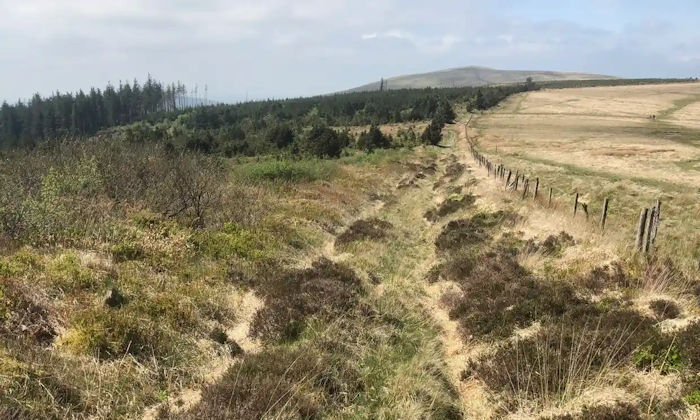Conny Waters – AncientPages.com – A well-preserved ancient road discovered by an archaeologist offers evidence that Romans moved much deeper into Wales than historians previously thought.
Dr. Mark Merrony, a Roman specialist and tutor at Oxford University who discovered the ancient road in Preseli Hills in Pembrokeshire, is astonished by this extraordinary archaeological find that seems to open a new chapter in the history of Wales.

Credit: Adobe Stock – serpeblu
Traveling through Wales, one can stumble across Roman sites, but “unlike intensively Romanised southern and eastern Britain – Wales was never conquered in the fullest sense. Although only a partial conquest, it still left Wales with some of Britain’s most revealing and significant Roman sites.” 1
For some reason, the road had been completely missed, but knowing about its existence will shed new light on Roman’s presence in Britain.
“I think they’ll go crazy in Wales over this because it’s pushing the Roman presence much more across Pembrokeshire. There’s this perception that the Romans didn’t go very far in Wales, but actually they were all over Wales,” Dr. Merrony told the Guardian.
The archaeologists also explained that rumors about the road’s existence emerged in the late 17th and early 19th centuries and had even been marked on 19th-century Ordnance Survey maps. However, “the idea was then rejected and removed from those maps,” he said.
Being around 11 kilometers and “quite wide,” many people must have constructed the road. “Whoever did this must have had hundreds and hundreds of men doing it. It can only be an army,” Dr. Merrony said.
According to Dr. Merrony, “finding a section of perfectly preserved Roman road buried in peat and further evidence in sunken lanes and low causeways barely discernible today but which followed straight routes and worked round hill contours “with perfect economy”, all typically Roman.”
The Guardian reports, that Dr. Merrony “expected evidence of a fort could emerge along its course, but that the Celtic Demetae tribe, who inhabited modern Pembrokeshire and Carmarthenshire, were thought to have been pro-Roman, so there would have been less need for a major military presence to quell local resistance.
Discussing antiquarians of previous centuries who referred to a Roman road, he singled out Edward Lhwyd, a keeper at the Ashmolean Museum in Oxford in the 1690s who visited Wales in 1698. He observed that “along this mountain is to be seen an old dyke, or as it is conjectured a Roman way, Roman coins being frequently found near”.

Dr. Mark Merrony, an archaeologist and Roman specialist, said it was extraordinary that the road had been missed until now. Credit: Mark Merrony
Lhwyd was not only right, he said. The existence of a road made perfect sense because it linked Roman farmsteads or villas, the remains of which have been found in the area: “That’s how I started to investigate the road,” he said. “I thought ‘why is a villa in the middle of nowhere?’”
The route also goes straight past a mine, which may be significant, he believes: “I think that’s one of the reasons this road is there, the silver mine, which has never been investigated archaeologically … If there’s a silver mine, odds-on the Romans knew about it and were exploiting it.”
See also: More Archaeology News
The results of Dr. Merrony’s studies will eventually be published in Antiqvvs, a quarterly magazine dedicated to archaeology, ancient art, and history where he is the founding editor.
Written by Conny Waters – AncientPages.com Staff Writer
Expand for references
CadwWales Government – The Romans in Wales





